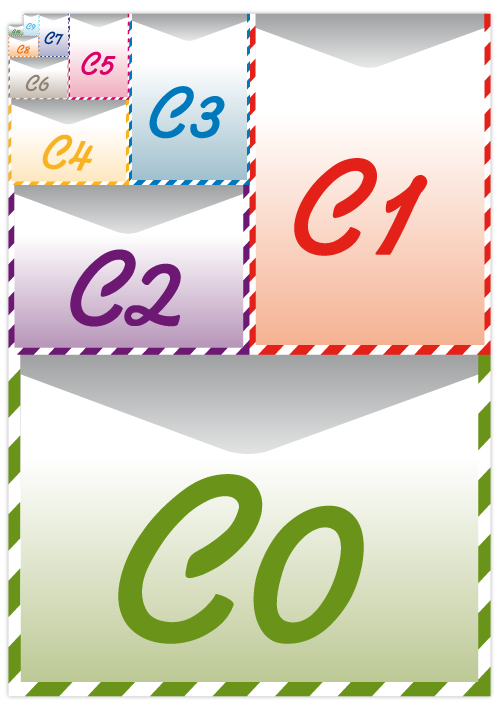C Paper Sizes : C0, C1, C2, C3, C4, C5, C6, C7...
C sizes were standardized by ISO 216 in 1975, after more than 40 countries have taken the German standard DIN 476, imagined in 1922 by Walter Portsmann. ISO 216 then took over the latter, in order to make it effective internationally.
DIN 476 (Deutsches Institut für Normung, German Institute for Standards) mainly regained proposal of Professor of Physics Lichtenberg, who explained in a letter to his colleague Beckmann in 1786 the interest and benefits of square root of 2 ratio between length and width of a paper sheet. This maintains the same proportion if one doubles the surface of the sheet along its length, or whether it is divided by 2 in its width.
The calculation is always as follows: a/b = 2b a = √2, a proportion of 1.4142. This lets say C formats are based on a homothetic system. Width of the larger size always gives length of the smaller.
C format is world-widely used, except in North America, which uses other formats. C lower formats are most often used for envelopes. Indeed, the C sizes uses dimensions that are the geometric average of A and B sizes. Slightly larger than A, they can be used for envelopes thereof.
It is said that format A(x) may fit a C(x) envelope, which may itself fit a B(x) envelope (the largest of the three).
Tell us your opinion

